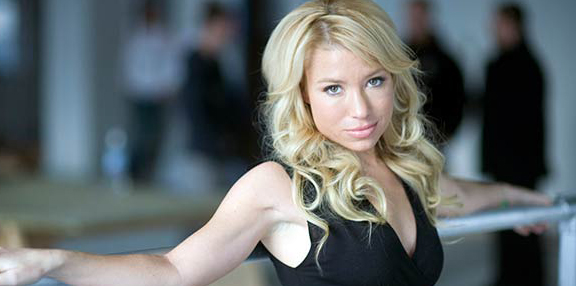
September 08, 2014
The Method
It’s easy to argue about Tracy Anderson. She is “too” (fill in the blank): tan, blonde, thin, confident. She promotes a fitness ideal we either loathe or admire, and debates easily ensue. But nobody argues about if her Method works or not. Because it does.
This isn’t a post about my affection for Tracy, or lack thereof. Rather I want to highlight something I heard her say in response to the popular critique that Anderson shows contempt for her audience by not ‘cueing’ in her classes or videos—not giving them enough information. I am paraphrasing here but, in her reply (brushed off in a most effortless, efficient way) she explained that this is a deliberate, professional choice. She doesn’t direct or talk much when she instructs because she finds it keeps you in your head, and out of the body. That her voice is one more distraction. She wants you to watch, mimic and figure it out, kinesthetically.
That makes perfect sense. More information is a distraction. And isn’t an effective way to get you closer to what you want, or even knowing what you want.
Ready for the segue?
With our client’s wholesale spaces we wanted to make the experience for Buyers align clearly with how Conni Reed, creator of Consuela, wanted her customers to feel: spacious yet abundant. This design challenge was a one that provoked us to explore Consuela’s brand identity most intensely.
What we advised for the showroom is one of buyer intrigue. This was a departure from the way the Consuela showroom had been staged, where all Consuela products are available on first sight. This staging felt abundant, like a bountiful bazaar, but ignored the “spacious” aspect that was also a critical brand attribute. Wanting buyers to see Consuela with fresh eyes and heart, we suggested a radical break from what was expected and contrast from industry/market norms. Set the stage so that the buyer gets less upfront and winds up craving more, feeling inspired to “dig” a bit deeper:
The showroom as workshop.
Here the buyer is transported into a mock-workshop and gets to “play” designer, digging though drawers of fabric and embellishments, encouraged to create combination of their own. Tangibly feeling more invested in Consuela’s offerings, Feeling included in the behind-the-scenes aspects of product creation would translate into Consuela setting a new platform in which to grow the brand. Not to mention sales.
This requires editing. A lot. Consuela has a myriad of product offerings—hundreds, if not thousands, of SKUs per season. Not showing them all at market was a hard sell.
Studies show that whether we’re buying a pair of jeans, applying to college, or my personal bugaboo; picking a carton eggs from the 36 varieties that Whole Foods offers… everyday decisions–both big and small–have become increasingly complex due to the overwhelming abundance of choice with which we are presented.
We assume that more choice means better options and greater satisfaction. But beware: choice overload can make you question the decisions you make before you even make them, it can set you up for unrealistically high expectations, and it can make you blame yourself for any and all failures. In the long run, this can lead to decision making paralysis, anxiety, and perpetual stress. This is the “Paradox of Choice”. Where options are a problem instead of a solution. In his book of the same name, Barry Schwartz illustrates how our obsession with choice encourages us to seek that which makes us feel worse. Now why would you go and do a silly thing like that?!
You can’t argue that feeling worse is so very un-Consuela. Or, that devotion to pitch-perfect editing is so very the method of Viewers Like You.
Image: Michael Falco for The New York Times